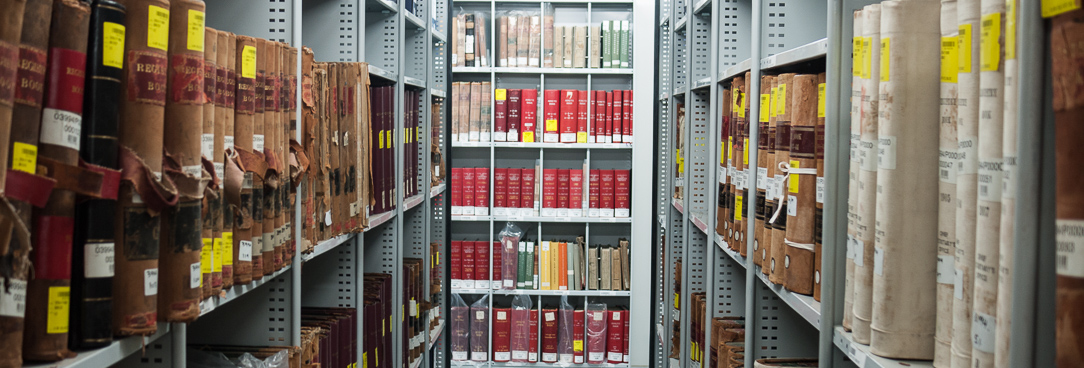Author: Charlie Farrugia
Senior Collections Advisor, Public Record Office Victoria
On Saturday 18 August, the Shepparton Times published an article about a copy of Ned Kelly’s Euroa Letter from our collection. This was loaned by PROV to the Robert O’Hara Burke Museum for use in the Ned Kelly Festival. I do not want my postings in this blog to be dominated by entries about Kelly, especially since there is an entire page plus images and a full transcription about the letter, in our online Kelly exhibition. Click here to access the relevant page about the letter.
As an archivist, what interests me most about the record is the filing information on the record itself.
Let’s start with the cover sheet, known as the docket. This sheet was placed on the record by staff of the Chief Secretary’s Department when the record was filed. This sheet contains information (or to use a 21st century term, metadata) about the registration/filing of the item. The first element visible is the registered file number 80/T12640. The expression of registration number as well as the use and placement of the alphabetical character in it immediately reveal this to be a Chief Secretary’s file. Registry numbers used by the various Victorian Government Departments during the 19th and first half of the 20th century differ quite markedly and, to me, identify the provenance of their files as distinctively as a signature or a departmental letterhead. It is effectively a form of Victorian Government recordkeeping DNA.

Underneath the red circled number 1 is the following: “Date: Dec 14th” and “Reg. Nov 1/84”. Further down the page is an identification of the author and a précis of the letter; “Edward Kelly Glenrowan Gives statement of his murders of Sgt. Kennedy & others & makes other threats.” This information appears to be duplicated by information on pencil on the first page of the letter itself. This reads “Edward Kelly Posted at Glenrowan Date Dec 14 Register in 1880” and on the left hand side “p.a”. In red ink is registry number T12640 and a red circled number 2.
So what to make of all of this? The Euroa robbery take place on 14 December 1878 and Ned could not have posted the letter from Glenrowan a month after his execution. The key to understanding everything is the “p.a”. This is an abbreviation of the file registry term “put away” (or “filed”). If you understand that, everything else falls into place as what was written in pencil reveals itself to be a filing instruction. The instruction attributes the author of the item to Ned Kelly at Glenrowan (presumably reflecting a belief that the original was mailed from there) and directs that it be retrospectively registered in the Chief Secretary’s filing system within the numbering sequence of letters received in 1880.
The proof of this comes from the entry in the Register (identified by reference to the letter T) that was used to document the allocation of number 12640. The image here shows the relevant page from the register (VPRS 3993/P0, unit 40, page 161). Although I could include the column headings in shot, the 1 Nov/84 appears in the date of registration column and the 14th Dec date appears in the date of the record (registered) column. The description of the item is exactly as appears on the docket and is in line with the instruction.
All that remains is to speculate why it took until 1884 for the document to be registered. The final page of the document contains the annotation Xd and the initials WHO. I suspect this means the document was examined (Xd) by William Henry Odgers (WHO). Odgers was the Under Secretary of the Chief Secretary’s Department but died in 1881. All that can be stated with surety is that someone other than Odgers wrote the filing instruction in late 1884 but in error ordered it to be placed in the 1880 sequence rather than in the 1878 sequence.
Finally, you might have noticed that I have not made any reference to the red circled numbers on each page of the document. This was excluded from consideration because it was not the practice of the Chief Secretary’s Department to number pages in this way preferring instead to replicate the file number (i.e T12640) on each page. So where did it come from? My research into the accession history of the document, indicated that these numbers were written onto the file by staff of our predecessors, the State Library of Victoria, when it was one of a handful of Kelly related records transferred to it from the Department during 1955.
